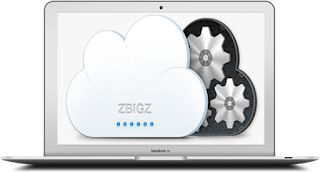Ashampoo WinOptimizer 2014 will stand for modern technology, efficiency, security and intuitive handling.
Ashampoo WinOptimizer 2014 was designed and developed with these issues in mind to
– make your PC faster and more responsive,
– protect your privacy and safeguard or remove sensitive data,
– clean and declutter your system,
– fix and repair common windows errors and improve system stability,
– achieve and maintains peak performance.
THE OFFER EXPIRE IN:
What’s New in Ashampoo WinOptimizer 2014 compared to the Ashampoo WinOptimizer 2013:
User Interface Enhancements:
-Redesigned overview and statistics pages for maximum ease of use and clarity
-User-definable favorites
Module Enhancements:
-File Wiper: Wipe free disk space to prevent data recovery
-Drive Cleaner: Faster execution and improved detection rate
-Registry Optimizer: Improved detection rate for better results
-Internet Cleaner: Faster execution
Enhanced Windows 8 Support:
-Revised task scheduler
-Updated for maximum compatibility
-Windows 8 tailored tweaks
src_winoptimizer_2014_modules_en
Installing the application suite takes minimal effort. However, since it is ad-supported, users should be careful when going through the setup steps, as WinOptimizer offers to download and install third-party components that it does not need to work normally.
WinOptimizer’s setup process asks if your system boots from an SSD or HDD. We selected SSD, which deactivated the Hibernation and Windows Search/Indexing options, leaving only the option to delete old backups.
WinOptimizer’s initial scan found issues in all three of its primary features: Clean, 1GB of junk; Optimize, 384 issues to resolve; and Protect, 362 security issues. Instead of log files, WinOptimizer’s scan results describe each category and how it affects Windows.
Advanced users can still view log files, but less-experienced users will definitely welcome WinOptimizer’s no-nonsense descriptions of what it does and why. We clicked “Fix Now,” and WinOptimizer quickly processed each category, starting with Protect, then Optimize and finally Clean. We were surprised no reboot was required. To verify WinOptimizer had done no harm, we rebooted anyway and were pleased to see our PC boot fast, safe, and clean. WinOptimizer also boasts backups, password protection, and tools ranging from System Benchmarking to File Wiper to Encryption and Decryption.
There are numerous tweaking modules integrated by WinOptimizer. The Drive Cleaner looks into unnecessary files to remove from the hard disk and free up valuable space. They cover Adobe Reader and Flash Player, QuickTime, Java cache, temporary files, history, memory dumps, log files, error reports, file fragments, installation files, along with Microsoft and other software.
The Registry Optimizer component aims to identify and remove any registry entries that are no longer associated with anything, in an attempt to boost overall PC performance. It looks into file formats, ActiveX, COM and OLE objects, shared DLLs, fonts, system sounds, help files, application paths, the Start menu, software, history lists, Windows Firewall, and others.
The Internet Cleaner searches for junk files in the installed web browsers and removes any traces of user activity, which particularly comes in handy when multiple users share a PC.
The defragging tool offers three types of defragmentation (fast, normal, and intelligent), ranging from the quickest but least effective method to the slowest, yet most thorough.
The service manager loads a list with all active services that can be turned on and off, showing their start type (manual, automatic, delayed start), status, and rating based on the community’s opinion.
The startup tuner lets users disable apps that automatically run at system startup to speed up Windows boot time, edit their settings, as well as add new ones if necessary.
The Internet connection may be automatically optimized by selecting the network name and interface, while advanced users can manually specify settings for the Maximum Transmission Unit (MTU), RWIN, TTL, Quality of Service (QoS), and others.
System analysis tools revolve around hardware specs (processor, mainboard, port, display, network, USB), drives and devices, along with software (Windows, software, memory, drivers).
Benchmark utility determines a system performance score based on the integer, FPU, and RAM.
HDD Inspector, looks closely at the hard disks to determine their health status, such as temperature and reallocated sectors. It also reveals S.M.A.R.T. attributes.



Comments
Post a Comment